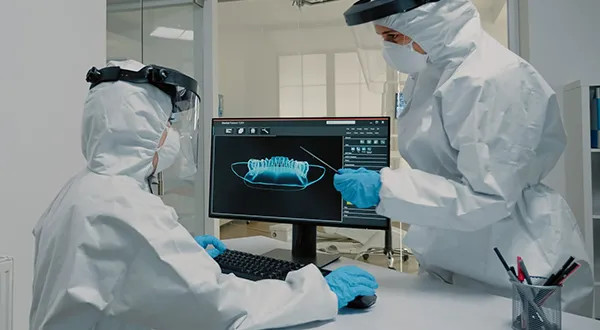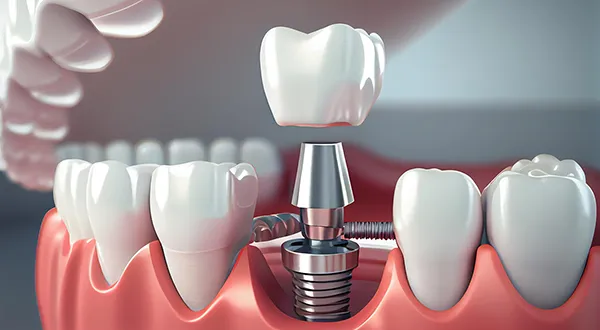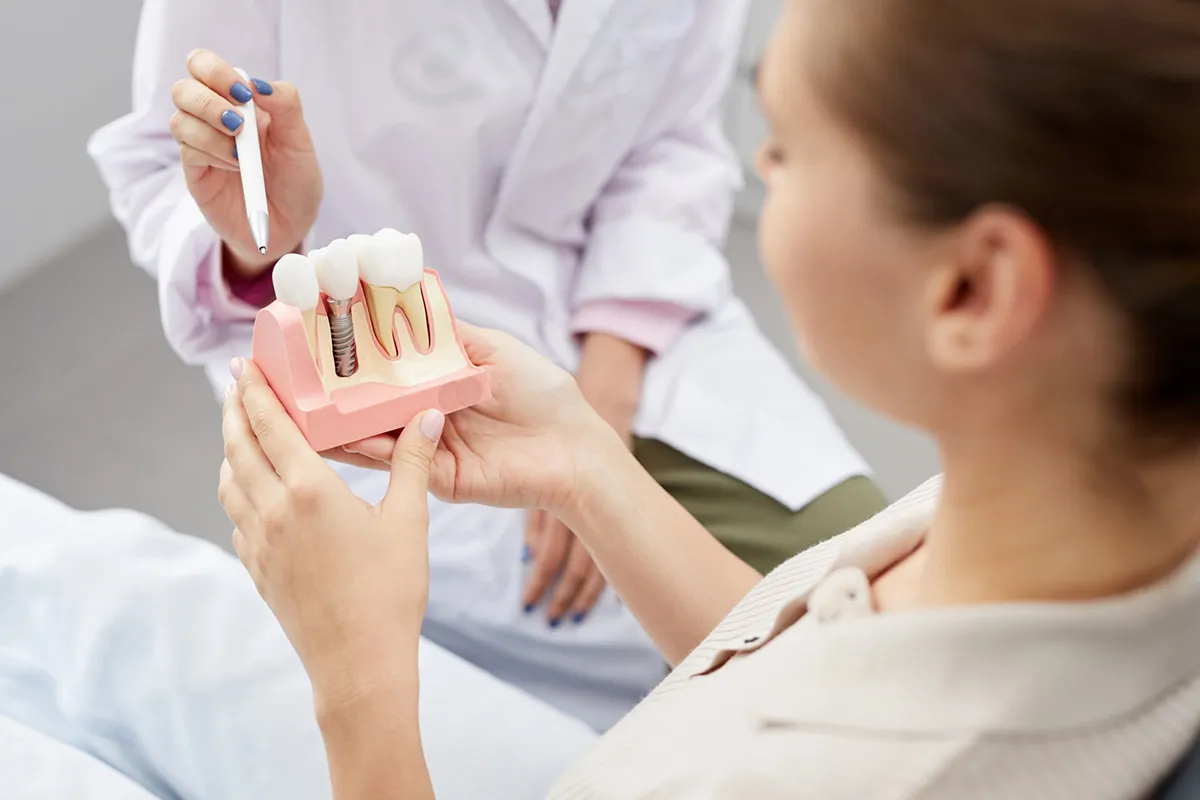How Modern Technology Has Improved Dental Implant Procedures?
Dental implants have revolutionized tooth restoration, presenting individuals with highly effective and enduring solutions to replace missing teeth. Recent years have witnessed significant strides in dental implant technology, propelling the field into a new era marked by enhanced safety, efficiency, and effectiveness. These advancements go beyond improving the patient experience and providing innovative ways to restore missing teeth.
Research studies indicate that the success rate of dental implants has reached an impressive 95-98%. It highlights the reliability and efficacy of these advancements in real-world scenarios. Furthermore, it emphasizes the positive impact on the lives of individuals seeking a durable and natural-looking solution for their smiles. Advancing technology ensures ongoing accessibility and cutting-edge choices, keeping tooth restoration at the forefront of dental innovation.
The integration of these technological advancements has transformed dental implant procedures, making them more precise, predictable, and patient-friendly. The ongoing evolution of these technologies and the exploration of regenerative therapies ensure that dental implantation remains at the forefront of innovation, offering patients increasingly sophisticated and effective solutions for tooth replacement.
Advancements in Dental Implant Technology:
Several advancements have contributed to the improved efficacy and precision of dental implantation. Here is a detailed description of each of them.
Digital imaging and 3D planning:
Digital imaging, primarily through cone beam computed tomography (CBCT), has revolutionized the diagnostic phase of dental implant procedures. CBCT provides highly detailed 3D images of the oral and maxillofacial structures.
These detailed images generated by CBCT allow dentists to examine the jawbone closely. They can see the quality and quantity of the jawbone and pinpoint the exact locations of crucial structures like nerves. It’s like having a detailed landscape blueprint before starting any construction work.
With CBCT, dentists can identify any potential challenges or issues before starting the implant procedure. It’s like knowing the road conditions and potential obstacles before going on a journey. With this information, dentists can create treatment plans customized to each patient’s specific needs. It’s not a one-size-fits-all approach; it’s personalized dentistry. This customized planning significantly increases the chances of success for dental implant procedures. It’s like having a tailor-made roadmap for a successful journey towards a restored and healthy smile.
Computer-Aided Manufacturing (CAM) and Computer-Aided Design (CAD):
CAM transforms the digital design into a physical restoration with remarkable accuracy. It streamlines the manufacturing process and reduces the margin of error. CAD technology allows for the creation of highly detailed digital models of a patient’s oral structures. Dentists can design custom implant restorations with meticulous precision, considering factors such as the patient’s bite, the surrounding teeth, and overall oral anatomy. It’s about creating an implant that seamlessly integrates with the patient’s natural teeth.
CAM technology guides the manufacturing process with precision. It ensures the final product matches the digital design exactly, down to the smallest detail. CAM technology works like a 3D printer by creating a customized piece based on the digital blueprint.

Integrating CAD and CAM streamlines the entire workflow of dental implant procedures. From the initial digital impressions to the final placement of the restoration, the process becomes more efficient and time-effective. It reduces the need for multiple appointments and adjustments, offering a more convenient and streamlined experience for the dentist and the patient.
Guided Implant Surgery:
Guided implant surgery has revolutionized dental implant procedures by introducing precision and predictability that enhance every aspect of the process. From meticulous planning to minimally invasive techniques, this technology ensures optimal outcomes. Also, it makes dental implantation a more efficient, comfortable, and successful experience for dentists and patients alike.
Guided surgery utilizes advanced imaging techniques to create detailed 3D models of the patient’s oral anatomy. This technology allows dentists to plan the entire implant procedure with precision and adopt minimally invasive techniques during the procedure. As a result, it reduces discomfort for the patient and promotes faster healing.
The guided implant surgery significantly enhances the accuracy of implant placement. The increased accuracy contributes to higher success rates and minimizes the risk of complications during and after the procedure.
Additionally, the guided surgery enhances communication between the dentist and the patient. The pre-planned surgical guides allow dentists to visually explain the procedure to patients, helping them understand what to expect. This transparency fosters trust and confidence, as patients can see the meticulous planning of their treatment.
Biocompatible Materials:
Biocompatible materials, mainly titanium, form the core of modern dental implants. Titanium can integrate seamlessly with the surrounding bone, known as osseointegration. This process ensures a strong foundation for the implant, similar to how a natural tooth is rooted in the bone.
Biocompatible materials are selected for compatibility with the body’s natural tissues, minimizing the risk of rejection or adverse reactions. Titanium, in particular, has been widely accepted by the human body, and its biocompatibility reduces the likelihood of immune responses or complications.
The strength and durability of biocompatible materials contribute to the longevity of dental implants. The dental implant materials can withstand the forces exerted during everyday activities like chewing and speaking. This durability ensures that the implant can function effectively on a long-term basis.

Biocompatible materials extend their compatibility to soft tissues surrounding the implant site. As a result, the gums and other soft tissues tolerate the presence of the implant, promoting a harmonious and natural-looking result. The absence of adverse reactions in the soft tissues further contributes to the overall success and aesthetics of the dental implant.
Ongoing research focuses on improving the biocompatibility of dental implant materials through coatings and surface modifications. These innovations enhance the interaction between the implant and surrounding tissues, promoting faster healing and minimizing complications.
Immediate Loading Protocols:
Immediate loading protocols have improved dental implant procedures by allowing for the attachment of prosthetics shortly after implant placement. This approach contrasts with traditional methods, where a waiting period was necessary before attaching the prosthetic. Immediate loading protocols significantly reduce the overall treatment time. Patients can receive functional teeth shortly after implant placement, leading to quicker oral function and aesthetics restoration.
Patients benefit from a more streamlined process and experience fewer inconveniences associated with traditional waiting periods. Immediate loading improves patient satisfaction by providing prompt results and minimizing the time without teeth. Also, it allows for the attachment of temporary prosthetics immediately after implant placement. It improves aesthetics during healing, as patients don’t have to go without visible teeth.
While unsuitable for all cases, immediate loading protocols apply in specific situations where conditions allow. Careful case selection and assessment are crucial to ensure the success of this technology.
“Advancements in dental implant technology have redefined the landscape of tooth restoration. It offers replacements and solutions with a success rate of over 95% and ensures lasting smiles.”
Regenerative Therapies:
Regenerative therapies in implant dentistry focus on enhancing the body’s natural healing processes. Stem cell research, growth factors, and tissue engineering aim to improve tissue regeneration around dental implants. While still in the experimental stage, these therapies hold potential for enhancing bone quality and soft tissue healing, particularly in challenging cases.
Regenerative therapies help stimulate the body’s natural regenerative abilities, promoting faster and more efficient healing of the implant’s surrounding tissues. It, in turn, leads to better improved long-term stability. Regenerative therapies involve bone augmentation procedures that create a more supportive environment for the implant. These therapies can also target soft tissues, enhancing the health and thickness of the gums around the implant. By promoting optimal healing and tissue regeneration, regenerative therapies can contribute to a reduction in postoperative complications.
Concluding Thoughts:
Modern technology has been a game-changer in the realm of dental implant procedures. These advancements collectively empower dental professionals to offer increasingly sophisticated and effective solutions for tooth replacement.
Also, it has established a new standard in implant dentistry and continues offering recent advancements. It has redefined how dental professionals approach the process and how patients experience tooth restoration.
Contact your Pinole dentists, Dr. Azadeh Hosseini, DDS, and Dr. Ghazal Hosseini, DDS, at Top Pinole Dental to learn more about Implant Technology Advancements.
Resource:
Understanding Dental Implant: Exploring Types and their Applications
*This media/content or any other on this website does not prescribe, recommend, or prevent any treatment or procedure. Therefore, we highly recommend that you get the advice of a qualified dentist or other medical practitioners regarding your specific dental condition.*
1500 Tara Hills Dr., Suite 104A, Pinole, CA 94564
Monday – Saturday 8:00 AM to 5:00 PM
